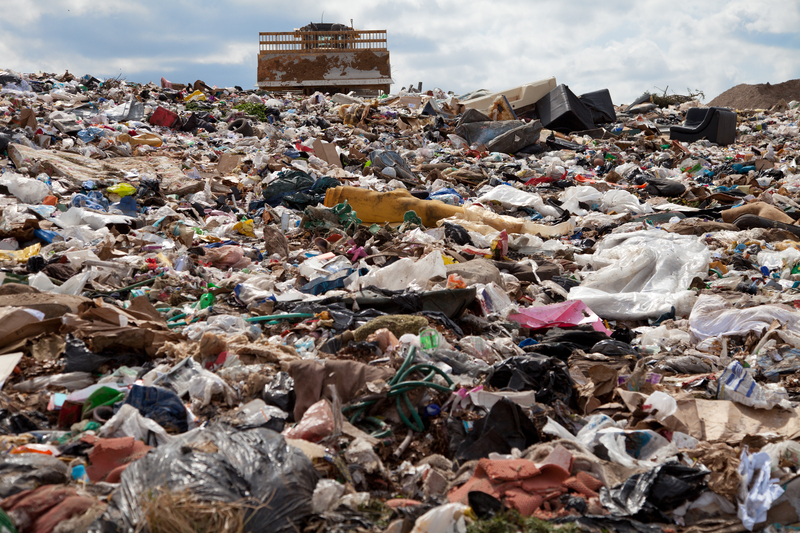A Safer Way to Handle and Dispose of Your PPE Waste
As the use of personal protective equipment (PPE) has soared over recent years, especially amid global health crises, so too has the amount of waste it generates. Whether in healthcare, industry, or households, improperly managed PPE waste can pose significant health and environmental hazards. This comprehensive guide explores safer and more effective methods for handling and disposing of PPE waste, ensuring your practices are both responsible and sustainable.
Understanding the Importance of Proper PPE Waste Management
PPE waste includes items such as masks, gloves, gowns, face shields, and shoe covers--products designed to protect us from infectious agents and hazardous materials. However, once used, these items can harbor dangerous pathogens or chemical contaminants. Mishandling or careless disposal can lead to environmental pollution, health risks for waste collectors, and the spread of diseases.
Implementing a safe and organized PPE waste management strategy protects individuals, communities, and the planet.
What is PPE Waste?
- Medical Masks and Respirators: Single-use masks and N95 respirators.
- Exam Gloves: Latex, nitrile, and vinyl gloves used for personal protection.
- Protective Gowns: Disposable gowns worn in medical or industrial settings.
- Face Shields and Goggles: Eye and face protection items, usually plastic-based.
- Shoe and Head Covers: Disposable covers used in contaminated or sterile environments.
The Risks of Improper PPE Waste Disposal
- Cross-Contamination: Used PPE can carry viruses, bacteria, or hazardous chemicals, risking infection or injury to waste handlers and the public.
- Environmental Damage: Most PPE is made from non-biodegradable plastics, causing persistent pollution in landfills, waterways, and wildlife habitats.
- Clogged Drainage Systems: Littered PPE can block drainage infrastructure, increasing flood risk and urban pest infestations.

Best Practices for Safe PPE Waste Handling
Proper handling of PPE waste is the first step in safe disposal. From donning and doffing gear to organizing waste streams, every stage matters.
1. Know When PPE is Ready for Disposal
PPE items should be discarded immediately after use, especially if visibly soiled or damaged. Prolonged use increases the chance of contamination and reduces efficacy.
2. Follow Safe Removal Techniques
- Gloves: Pinch the outside of one glove at the wrist, peel it away from your hand, turning it inside out. Hold it in your gloved hand, then slide fingers under the other glove at the wrist and peel off.
- Masks: Remove by holding the ear loops or ties. Do not touch the front of the mask.
- Gowns: Unfasten ties, pull away from the neck and shoulders, turn inside out, and fold into a bundle.
- Face Shields: Remove from the back or sides, avoiding the front shield.
Always perform hand hygiene immediately after removing PPE.
3. Segregate PPE Waste at the Source
Separate single-use PPE waste from regular trash. Designate bins specifically labeled for PPE disposal. In workplaces, color-coded bins help minimize the risk of accidental mixing.
4. Use Appropriate PPE Waste Containers
- Sealable Bags: Use sturdy, leak-proof bags for your PPE refuse.
- Hard Bins: In healthcare or high-risk environments, use covered, hard plastic bins to contain potential pathogens.
- Sharps Containers: For contaminated items that can puncture (like broken face shields), use approved sharps containers.
5. Clearly Mark Collection Points
Ensure all PPE waste drop-off locations are clearly labeled and accessible to encourage compliance from everyone in the facility or household.
Safe Disposal of PPE Waste: Methods and Strategies
1. Double Bagging for Extra Protection
Double-bagging your PPE waste--placing one bag inside another--adds an extra layer of containment in case one leaks or ruptures, especially important for visibly contaminated waste.
2. Designated PPE Waste Streams
Develop separate streams or schedules for PPE disposal. In healthcare environments, PPE waste is usually considered infectious waste and requires special management.
3. Label and Date All PPE Waste Bags
Clearly label bags or containers with the date and description (PPE Waste Only) to ensure proper handling throughout the disposal chain.
4. Collection Through Licensed Waste Management Providers
Work with certified waste disposal companies, particularly for large quantities or hazardous materials. These professionals follow strict protocols to ensure safe transport, treatment, and disposal.
5. Avoid Burning or Flushing PPE Items
Never burn PPE waste at home--the resulting fumes contain toxins and microplastics. Flushing masks or gloves down toilets leads to severe sewer blockages and environmental damage.
Eco-Friendly Alternatives to Traditional PPE Waste Disposal
While the safest way to dispose of PPE waste is following official guidelines, new solutions are emerging to address the environmental impact of PPE. Explore these strategies:
1. Biodegradable PPE Products
Look for biodegradable masks and gloves, often made from plant-based fibers such as bamboo or cornstarch. While not always medically rated, they are ideal in low-risk settings and greatly reduce plastic waste accumulation.
2. PPE Recycling Initiatives
- Industrial Recycling: Some specialized companies process clean PPE waste by melting and reformulating plastics into construction materials, traffic cones, or protective barriers.
- Take-Back Programs: Increasingly, mask and glove manufacturers offer return programs to facilitate closed-loop recycling.
Always check with your local recycling authority before placing used PPE in standard recycling bins--most municipal programs do not accept contaminated PPE.
3. Sterilization for Extended Use
In some professional settings, PPE such as N95 masks can be sterilized through approved processes (e.g., vaporized hydrogen peroxide) for limited reuse. This extends product life and reduces overall waste. However, never attempt home sterilization for single-use PPE.
How to Dispose of PPE Waste at Home
Simple Steps for Safe Household PPE Waste Disposal:
- Separate and Contain: Place used PPE in a sturdy, sealable bag.
- Tie Securely: Once full, tie the bag tightly to prevent leaks.
- Double Bagging: Consider placing the first bag in a second one for added safety.
- Dispose with Household Waste: Place the double-bagged PPE waste in your general household trash. Never recycle contaminated PPE.
- Perform Hand Hygiene: Wash hands thoroughly after disposing of PPE waste bags.
Do not litter PPE in public places. Mask and glove litter is a public health hazard.
PPE Waste Disposal in Healthcare and Workplaces
Healthcare PPE Waste Management
- Use Red or Yellow Bags: Most hospitals use color-coded bags for infectious waste streams.
- Dedicated Collection Points: Place in clearly marked, foot-operated bins to avoid hand contact.
- Timely Removal: Remove from point of generation daily or more frequently as needed.
- Professional Disposal: Partner with licensed medical waste carriers who incinerate or autoclave infectious waste under controlled conditions.
PPE Waste in Offices, Factories, and Other Workplaces
- Bin Placement: Provide separate, marked bins for PPE waste in all occupied areas.
- Employee Training: Ensure staff are trained on how and where to dispose of PPE correctly.
- Regular Cleaning: Clean and disinfect waste containers regularly.
- Contact Waste Service Providers: Arrange regular pick-ups and safe disposal with waste management professionals.
Innovations and Future Trends in PPE Waste Management
1. Reusable PPE Options
Reusable face shields, cloth masks, and washable gowns are viable alternatives in many non-clinical settings. These products dramatically reduce waste and can be sanitized using simple procedures.
2. Smart Disposal Bins
Touchless, sensor-activated bins are gaining popularity in high-traffic areas. These bins reduce contact, have internal odor control systems, and often feature liners designed for PPE waste.
3. Automated Waste Treatment Technologies
On-site disinfection devices, such as compact incinerators or UV-sanitizing units, can neutralize pathogens in PPE waste before it leaves the facility, minimizing risk and environmental impact.
Educational Outreach: Raising Awareness About PPE Waste
A more sustainable PPE waste future relies on widespread education. Both employers and communities can foster safer habits by:
- Distributing Infographics and Posters: Visual reminders at disposal points improve proper waste segregation.
- Conducting Training Sessions: Regular briefings for staff and household members on the importance and methods of correct PPE waste management.
- Online Campaigns: Leverage social media and corporate platforms to share new disposal guidelines and eco-friendly updates.

Conclusion: Your Role in Safer PPE Waste Handling
PPE waste is a unique challenge that blends public health with environmental stewardship. The keys to handling and disposing of PPE waste safely are education, responsibility, and adapting to new technologies and sustainable alternatives.
Whether you're a healthcare worker, an office manager, or a concerned homeowner, your actions matter. By implementing safe PPE waste practices--proper handling, correct segregation, secure disposal, and embracing innovations--you protect your community and contribute to a cleaner, healthier planet.
Commit today to a safer way to handle and dispose of your PPE waste. Your leadership can inspire others, reduce risk, and ensure we are ready to meet future public health and environmental challenges together.
Frequently Asked Questions (FAQ) on PPE Waste Management
-
Q: Can I recycle my used masks and gloves with household recyclables?
A: No. Used PPE like masks, gloves, and gowns should never be recycled with household items due to contamination risks. Dispose of in regular trash following safety guidelines. -
Q: Is there a safer way to dispose of PPE waste at events or public spaces?
A: Yes. Event coordinators should provide specifically labeled and secure bins, educate attendees through signage, and contract professional waste disposal services. -
Q: What should I do with PPE waste if I am caring for someone with a contagious disease?
A: Double-bag all used PPE, store them separately for at least 72 hours if possible, and then dispose of with general waste. Always wash hands and sanitize surfaces afterward. -
Q: Are there government regulations for PPE waste disposal?
A: Yes. Check your local, state, or national health department guidelines for the latest laws and recommendations. Healthcare facilities must follow stricter, regulated protocols.
Take the Next Step for Safer PPE Waste Management
For the health of your community and the planet, always handle and dispose of PPE responsibly, following the safer way to handle and dispose of PPE waste as outlined above. Embrace best practices, educate others, and stay updated on innovations--because every action counts.
